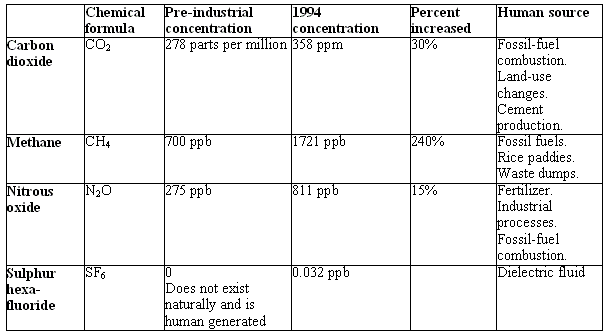Revolution #030, January 15, 2006,
From A World to Win News Service
Hurricanes, Climate Change, and Global Warming
Part 2: Man-made Climate Change
November 21 and 28 2005. A World to Win News Service. While the U.S. government has insisted that global warming doesn’t exist, most scientists are convinced otherwise. Some researchers say global warming was a major factor in the deadly series of hurricanes (as the violent tropical storms or cyclones that hit the Americas are called) that struck the Caribbean, Central America, and the U.S. recently. At the Montreal international summit on climate change, the first such meeting since the 1997 Kyoto summit, the U.S. continued to refuse to recognize the dangers or even the existence of global warming, which an attending UK scientist declared is as perilous to the future of humanity as weapons of mass destruction. Observers at the opening of the Montreal meeting of 190 countries had little hope that it would make real progress in achieving international agreements to limit greenhouse gas emissions, the main factor in the rapid rise in world temperatures. Even though the targets for reducing greenhouse gas emissions agreed to at Kyoto are criminally inadequate (the goal is to reduce emissions to 5 percent below the 1990 level by 2012), so far actual emissions have increased, not decreased, and even the European Union, which supported Kyoto, has failed to meet its target.
What is the link between global warming and tropical storms? What are the causes of global warming? To what extent is global warming caused by human activity, and what can be done about it? How dangerous is global warming? Why do the rulers of the U.S. and other major powers refuse to take serious action even as disaster stares mankind in the face? These questions are addressed in this article, which is being run in five parts. See issue 28 for Part 1: Natural Climate Changes.
"Greenhouse gases" are gases that trap the Sun’s heat in the same way as glass in a greenhouse. They allow solar radiation to enter the Earth’s atmosphere and then absorb the heat reflected back up by the Earth. Some of these gases exist in nature, like water vapor, methane (produced by decomposing plants and animals and animal flatulence) and carbon dioxide. Carbon dioxide is a byproduct of burning carbon substances – trees and fossil fuels such as coal, oil, and gas. Methane, 20 times more powerful than carbon dioxide in trapping the Sun’s heat, is also produced by agriculture, mining, and industry. The percentage of these gases increased by about 25 percent over the last 150 years. Along with this has come the increasing presence of another kind of greenhouse gas in the atmosphere, exclusively man-made gases like those used in aerosol spray cans. At the same time, cutting down forests and other changes in land use has crippled the natural processes whereby trees and other plants remove carbon dioxide from the air.
In addition to studies of the Earth’s atmosphere, other cosmological facts also suggest that atmospheric temperature is directly related to the concentration of carbon dioxide. For example, the planet Mars is very small, and therefore its gravity is too small to retain a dense atmosphere. The Martian atmosphere is about a hundred times thinner than Earth’s. Because what little carbon dioxide exists on Mars is frozen in the ground, Mars’s average surface temperature is about –50 degrees centigrade (-58 Fahrenheit). In contrast, Venus has almost the same mass as the Earth but a much denser atmosphere, which is composed of 96% carbon dioxide. This high percentage of carbon dioxide produces intense global warming and so Venus has a surface temperature of over +460 degrees C (860 F).
The table below extracted from the Intergovernmental Panel on Climate Change (IPCC) data lists four out of seven greenhouse gases that are still in use and most common in climate change. The concentration of these chemicals associated with modern human activities has considerably increased in the atmosphere since pre-industrial times, and very sharply during the last few decades.

The diagram below also shows the increase in the concentration of these gases since the industrial revolution:

Greenhouse gases are not the only factor in global warming. As said before, the Earth went through periods of heating and cooling long before humanity produced enough greenhouse gases to make a big difference, and even in the 150 years there have been cycles of warmer and cooler weather. The relationship between greenhouse gases and other factors is still under study. But research has led most scientists to conclude that the solar energy trapped by greenhouse gases is playing the main role in driving the rapid increase in the Earth’s temperature we are seeing today.
To be continued.
NEXT WEEK - Part 3: How Dangerous is Global Warming?
If you like this article, subscribe, donate to and sustain Revolution newspaper.



